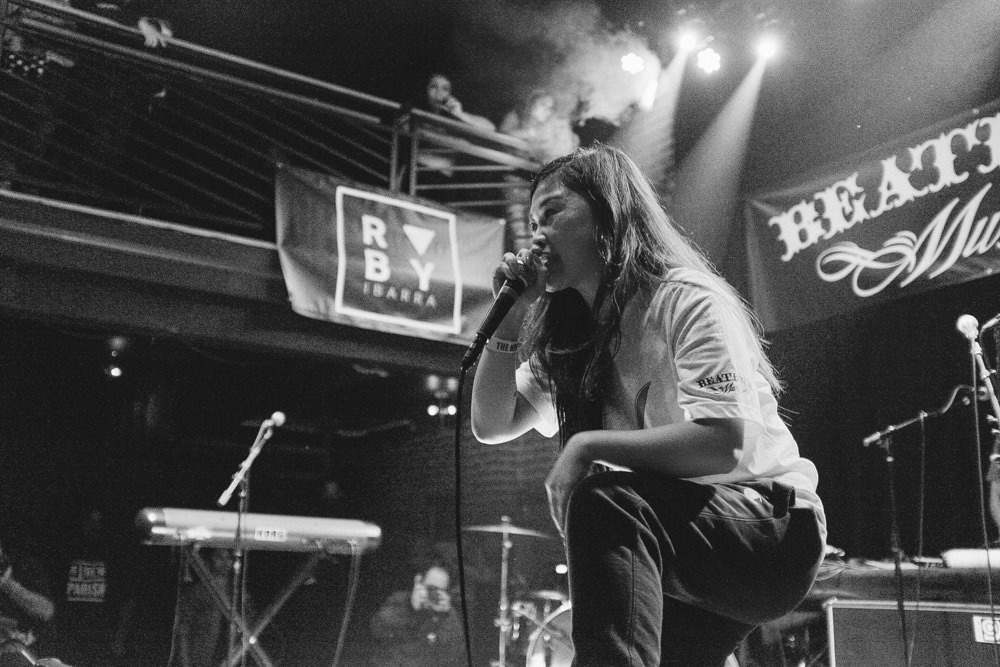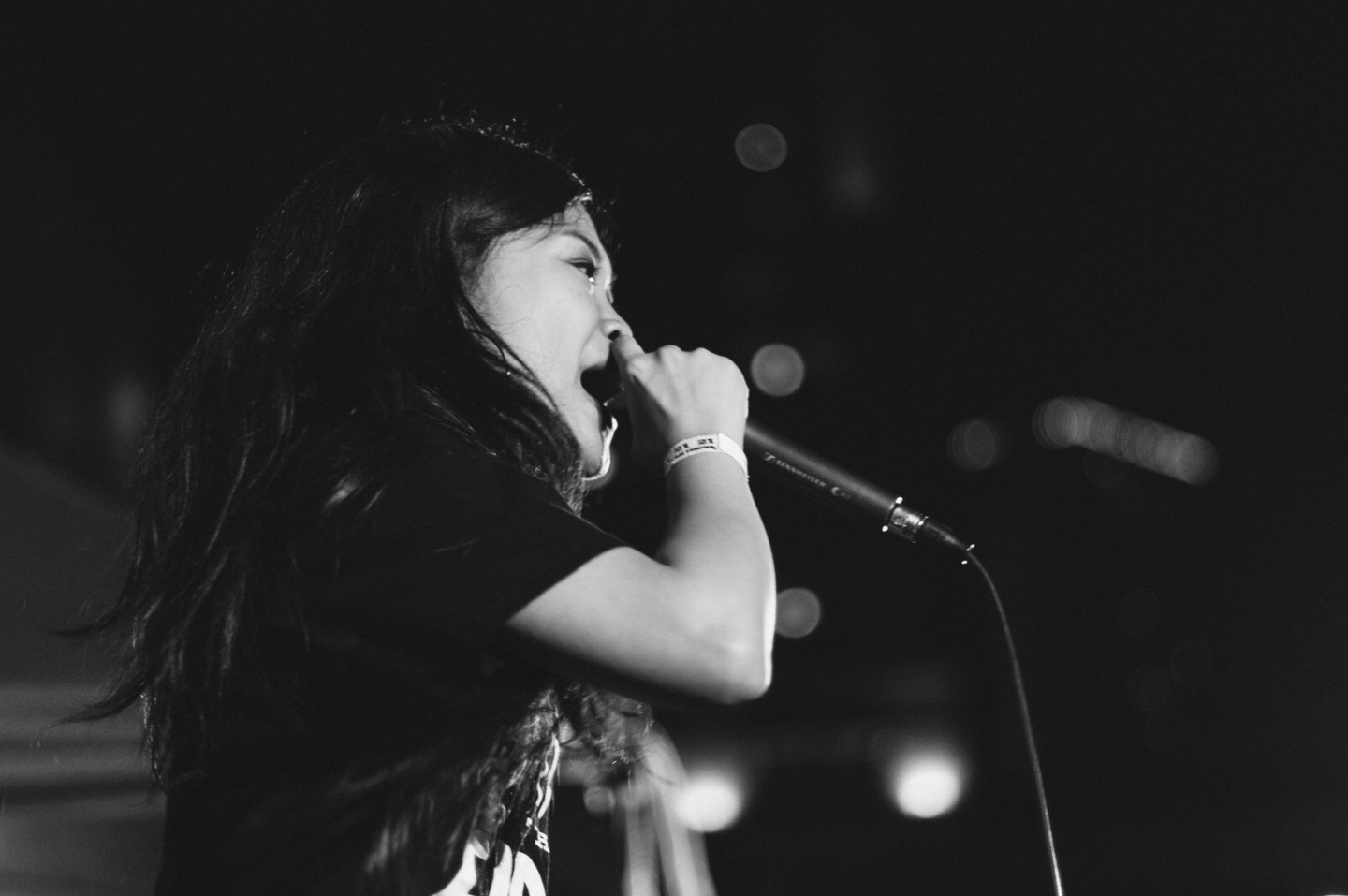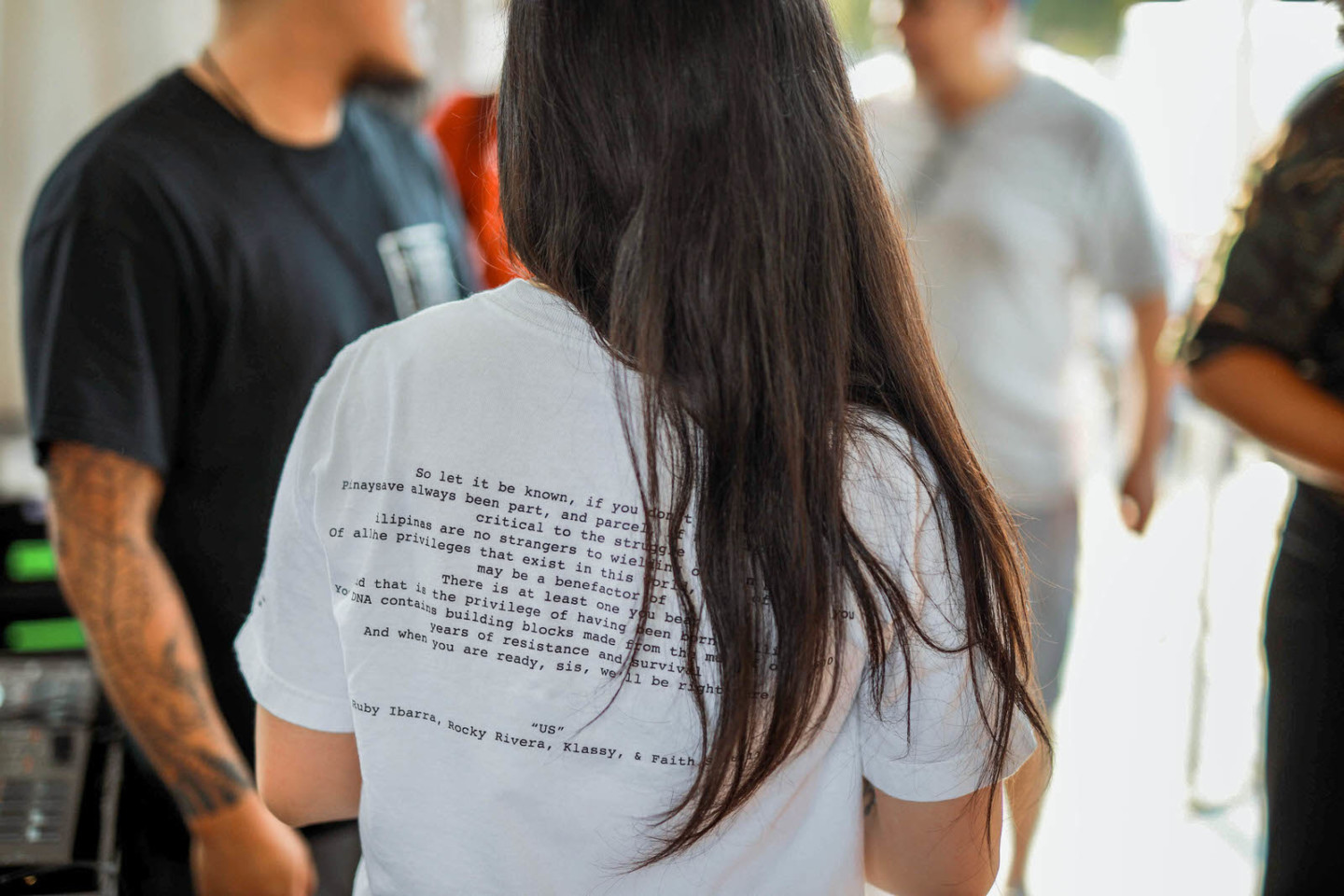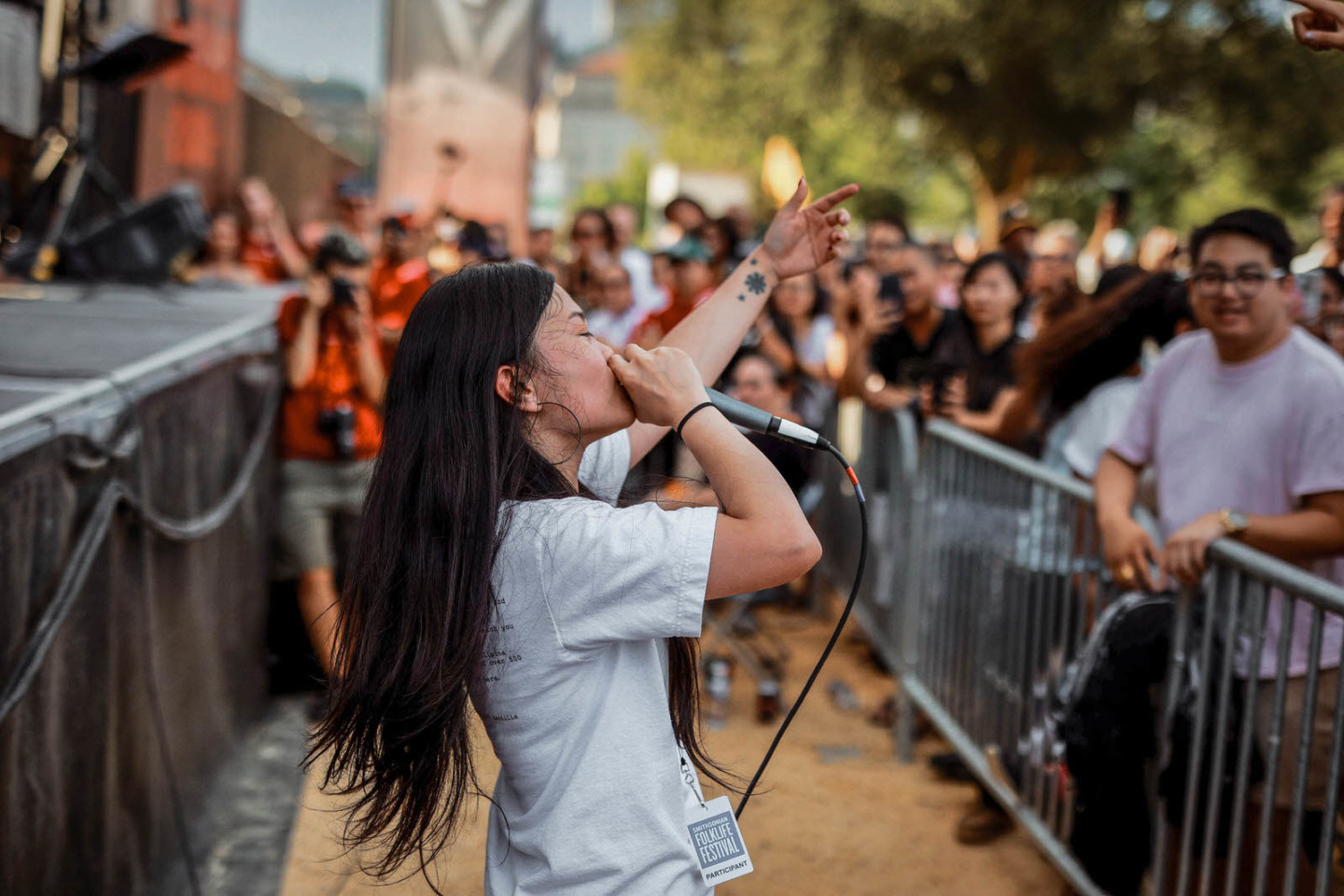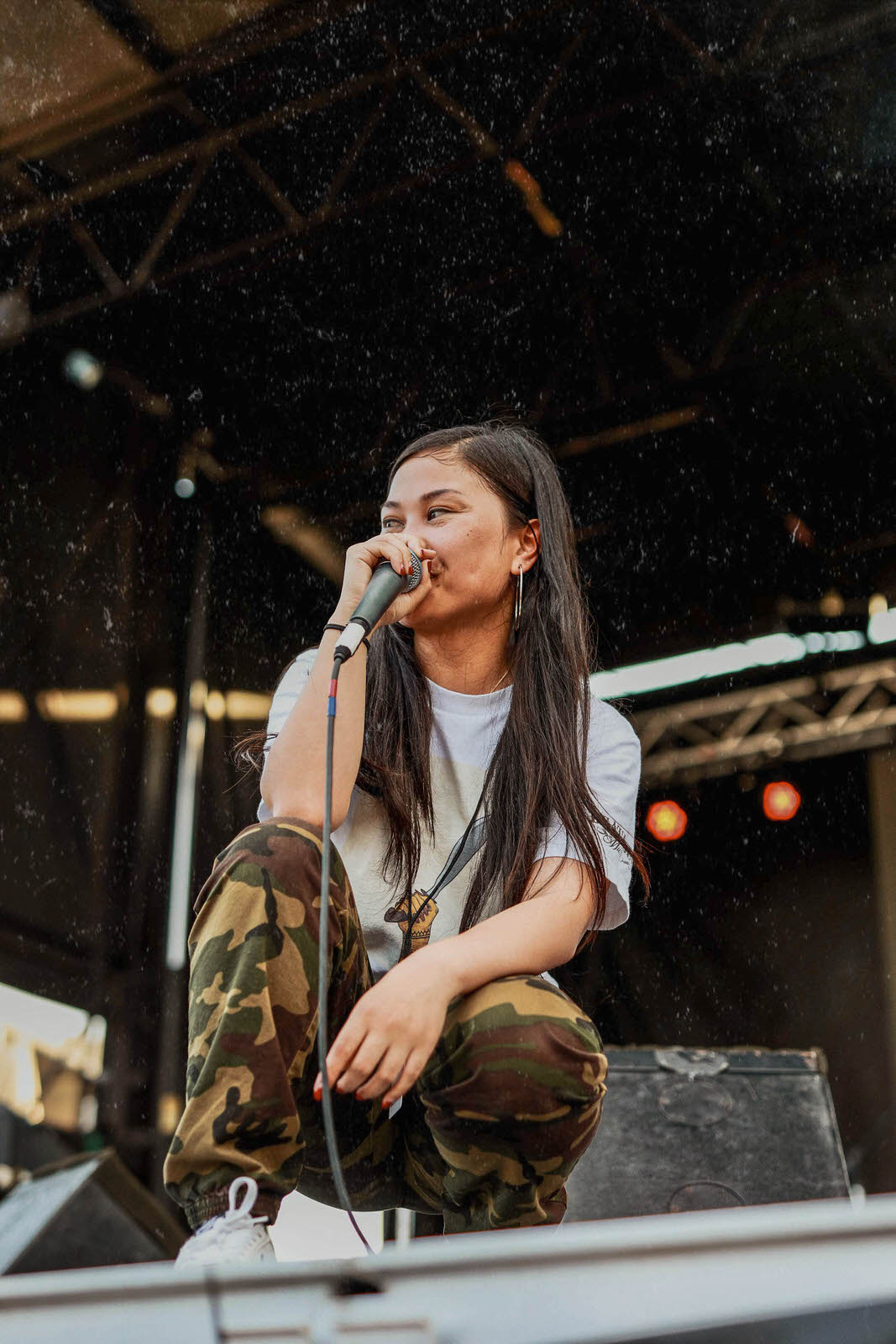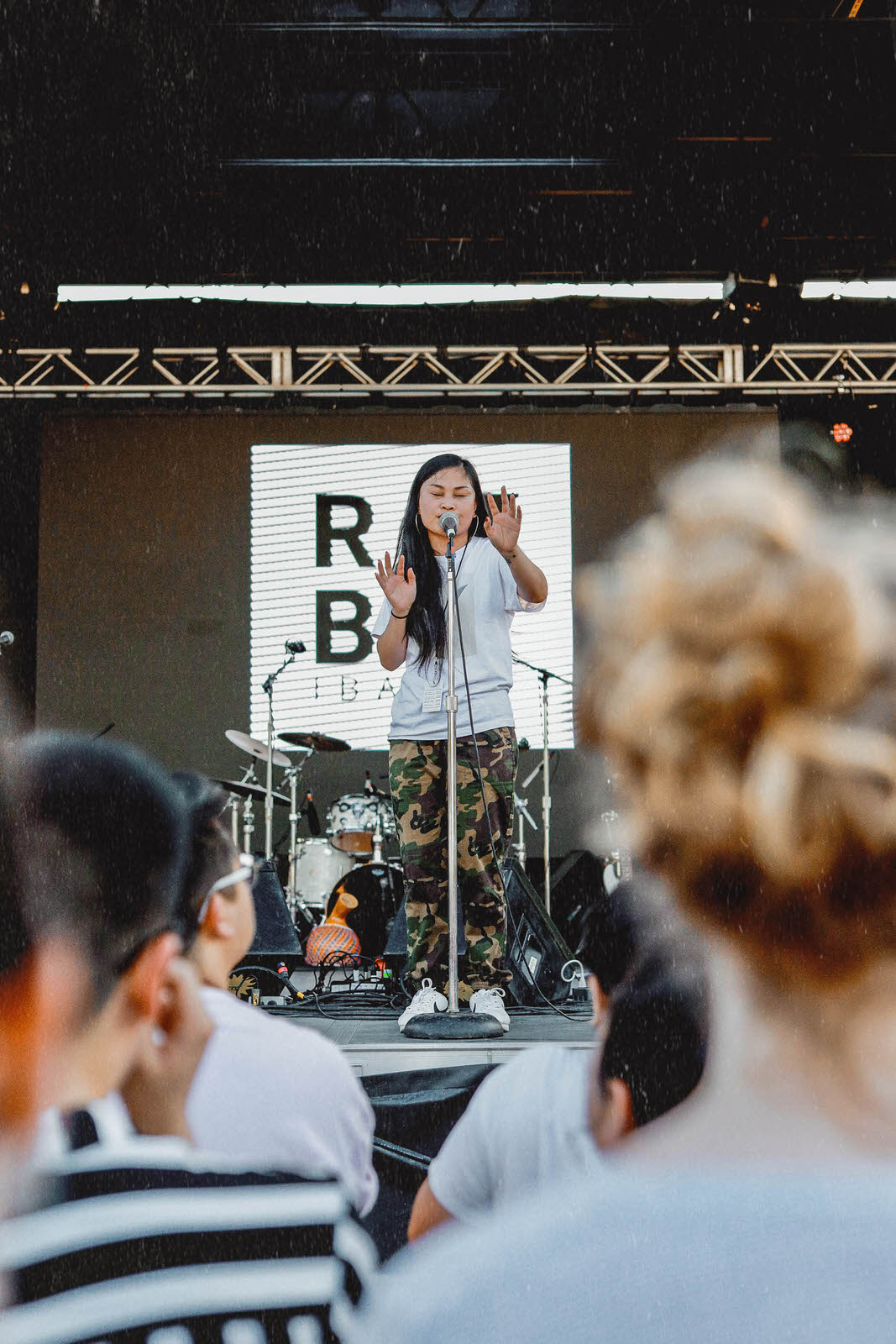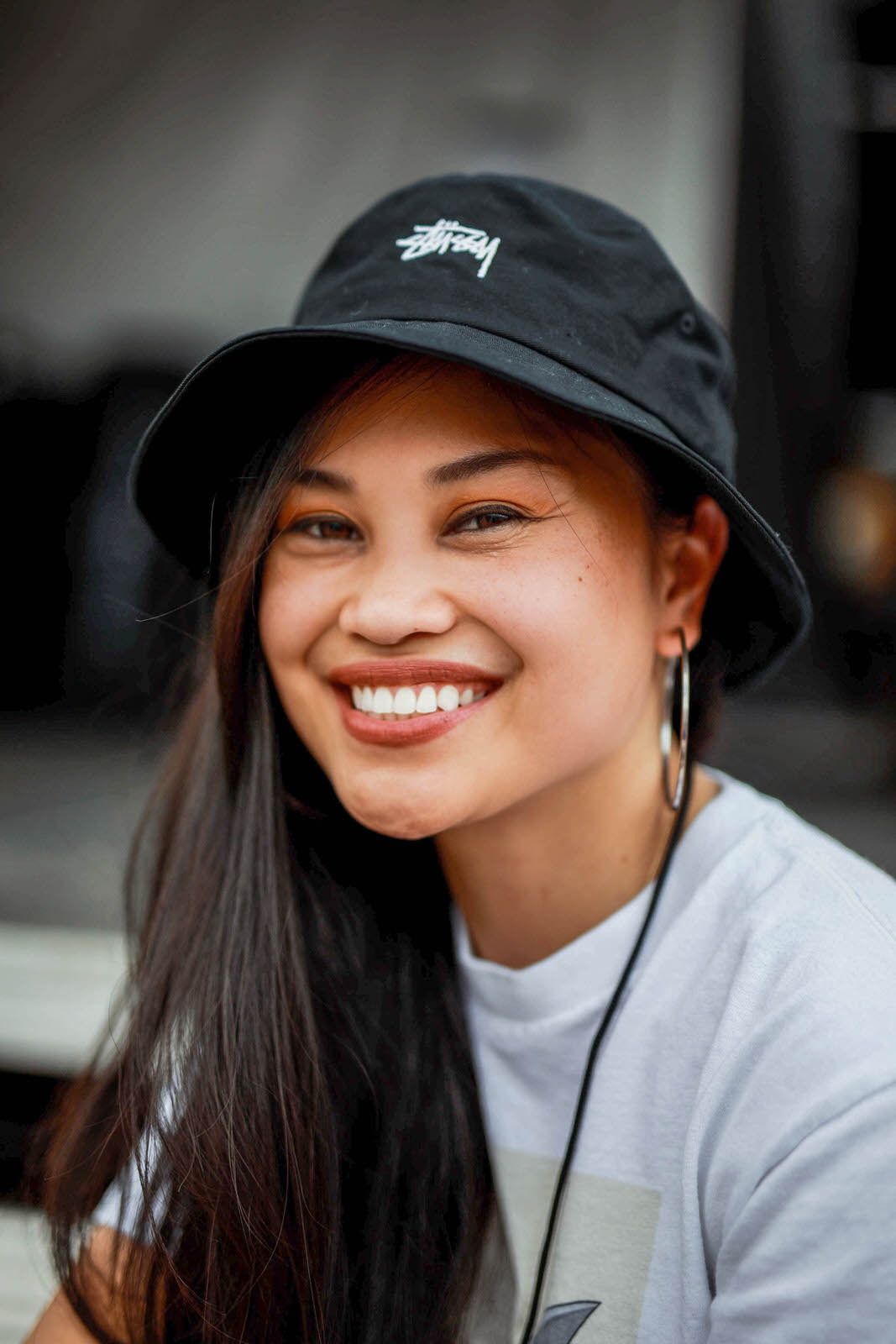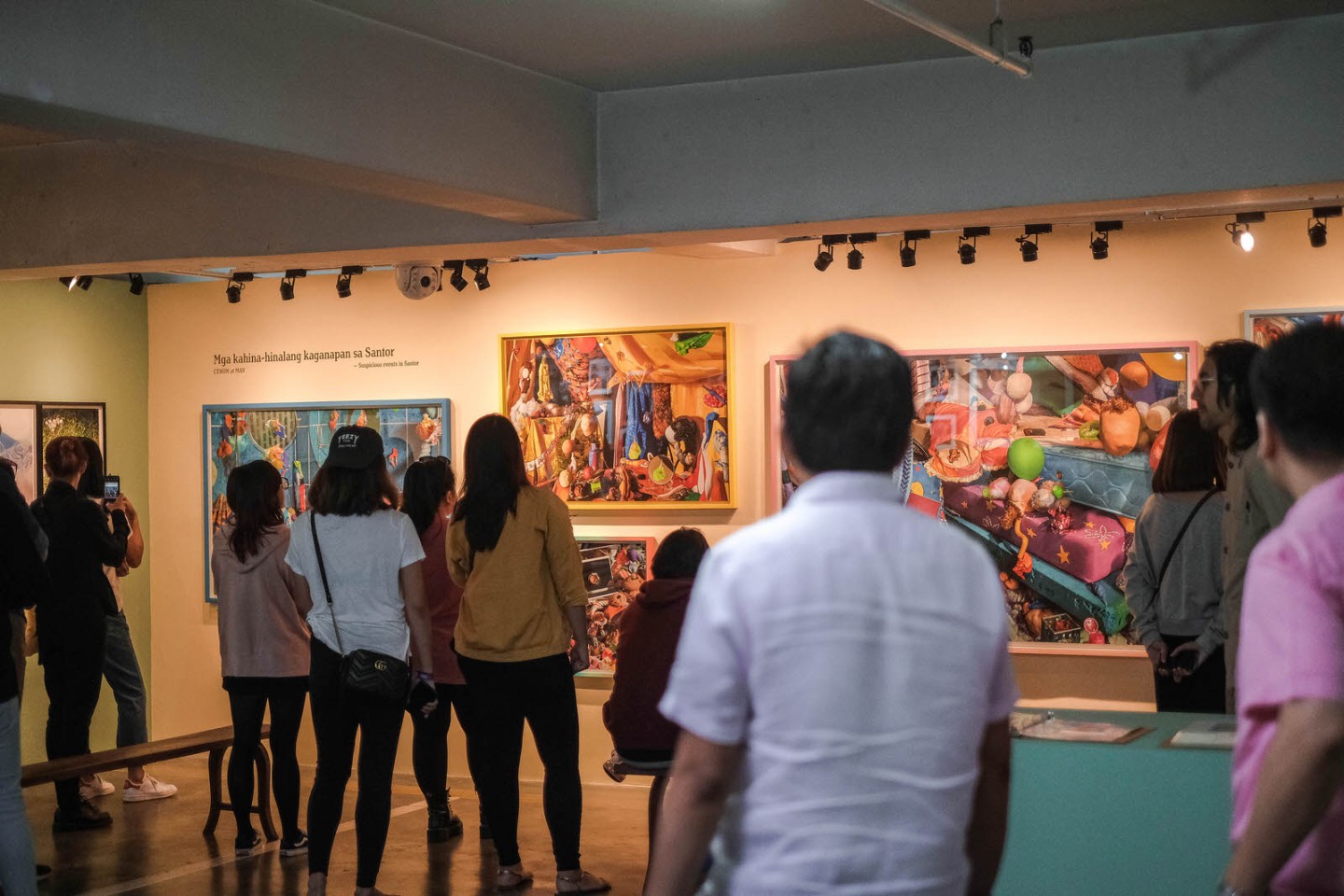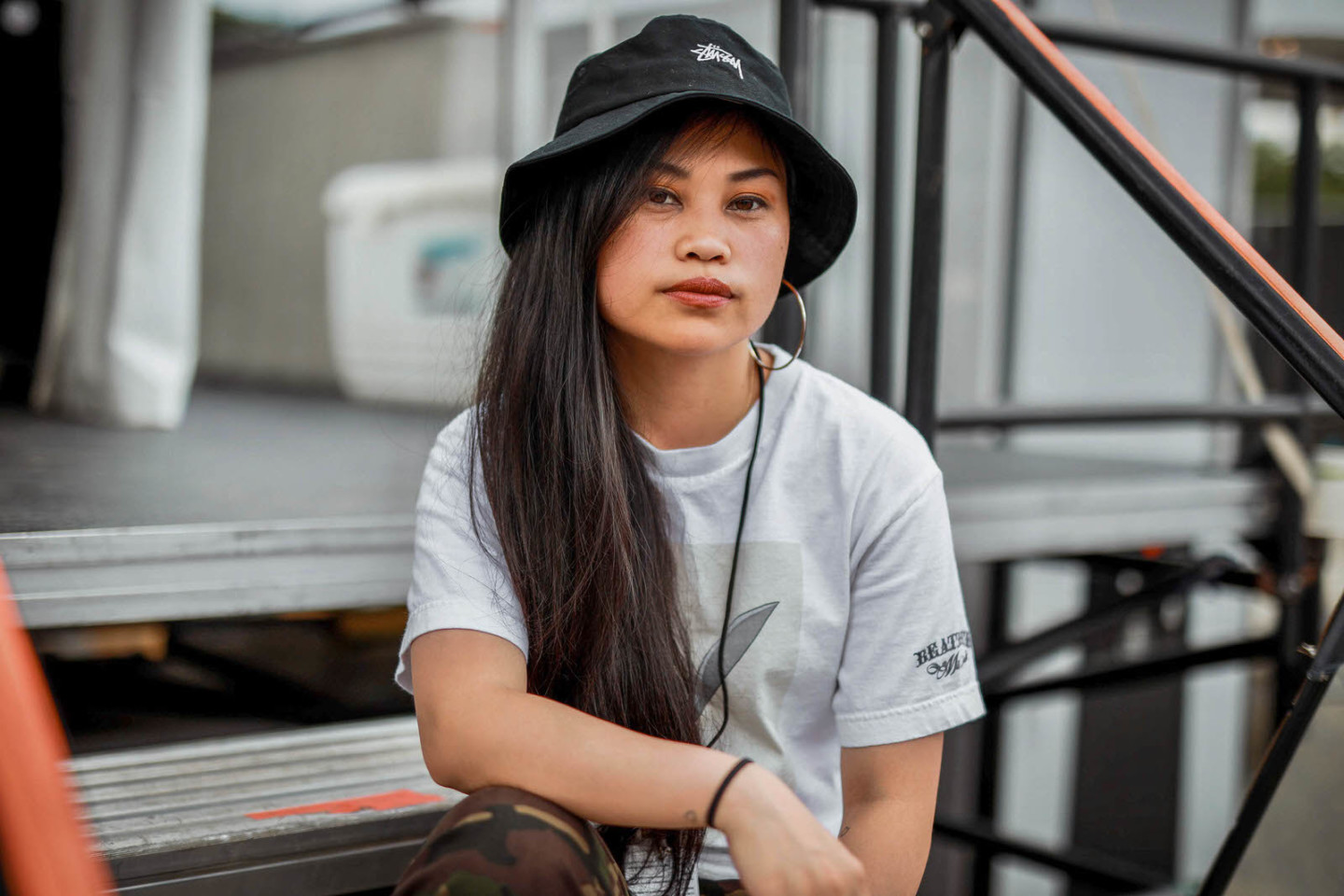
When Ruby Ibarra raps, her voice echoes. It echoes the call to arms of the generations of Filpinas that have been with her in the struggle. She invokes them through her lyricism — from Nieves Fernandez to Gabriela Silang. Behind her as well are the voices of the immigrants that have embarked on the journey for a better life. And more recently, her voice echoes the demands for cooperation from the frontline workers who are trying to put an end to the pandemic. When Ruby Ibarra raps, she is not alone.
The Bay Area multi-hyphenate is aware of the spaces she occupies. As an Asian-American rapper, she understands and respects the history behind her craft. Moreover, she taps into hip hop’s subversive potential to give voice to her activism. Spaces in America aren’t always forgiving towards women and immigrants. Her verses tell these truths.
Her debut album Circa91 teaches us that anger can heal. The 18-track LP narrates the lived experiences of women and immigrants, and all of their intersections. Preceded by an interlude illustrating the American microaggression on our names, “Taking Names” articulates the power that our accents and names have. Here, Ibarra’s dexterity is displayed. She lists the crimes of American imperialism and takes names—all in one breath. “Us” features the album’s battlecry: “Island woman rise, walang makakatigil. Brown, brown woman, rise, alamin ang ‘yong ugat. They got nothin’ on us.” Alongside rappers Klassy and Rocky Rivera, and poet Faith Santillan, Ibarra calls to organize and mobilize, and makes it clear that it is a privilege to be a Filipina.
In between her performances on Kumu and trying to find ways to end this pandemic, Ruby Ibarra found space for us. We talk about the politics behind her craft, her hyphenated identity, and the need to make spaces more inclusive.
2021 is turning out to be quite a big year for Ruby Ibarra. There’s the NYT Style Magazine cover, the Youth Leadership award, and Kumu Con 2021. How has this year been like for you? How different has it been from 2020?
This has been such a rollercoaster of a year for me! Similar to 2020, it’s definitely had a lot of challenges, but thankfully, I’ve also had a lot of blessings this year, with regards to both my career and personal life.
First and foremost, I just got married this past September! Our initial wedding date was in 2020, but we had to postpone it due to the pandemic. I think if 2020 taught me anything, it was that sometimes life will present you with unexpected events, but how you deal with them is part of the journey and the lesson. I was also extremely fortunate to attend the Tribeca Film Festival in New York this past summer, to watch the screening of the film, Asking For It, which I was a part of.
In addition to that, I was also awarded with the Immigrant Youth Leadership Award, and now I get to be part of the very first Kumu Con in Las Vegas! I am remaining hopeful that next year will bring more blessings for everyone; I know it’s been such a challenging last two years, especially since we’re still in a pandemic, but I’m positive that there’s a light at the end of this tunnel.
Was this something that you had envisioned when you were starting as an artist back in 2010?
When I first started out as an artist, I certainly had no idea how to envision my career. I think I was also still trying to figure out my voice, style, and lane. I think we can plan our career, but it’s never truly going to go as we plan—we change routes along the way, learn, and grow. For me, once I uncovered my voice and realized that my personal stories would be part of my music, I think that’s when I was able to better envision my short-term and long-term goals for my career.
Let’s talk more about your craft. Where did the inclination towards rap and spoken word come from?
I’ve always been such a big fan of hip hop ever since I was a young child. I always see myself as a fan of the music first, before an artist. I think it’s important for me to do that because it also serves as a reminder of why I do what I do and why I love this genre in the first place.
Secondly, my passion for spoken word came after rap; I was in high school and my drama class teacher introduced me to slam poetry during one semester. From there, I knew this was another art form that I wanted to be part of.
Could you give us an image of how the hip hop community in the Bay Area is like?
The Bay Area has always been a historical place for hip hop. This is where some of the greats are from: from E-40 to Hieroglyphics. Hip hop is a big part of the culture here. I’m lucky to have grown up in the Bay because it definitely influenced the type of music and artists I grew up listening to, and later, would inspire my music.
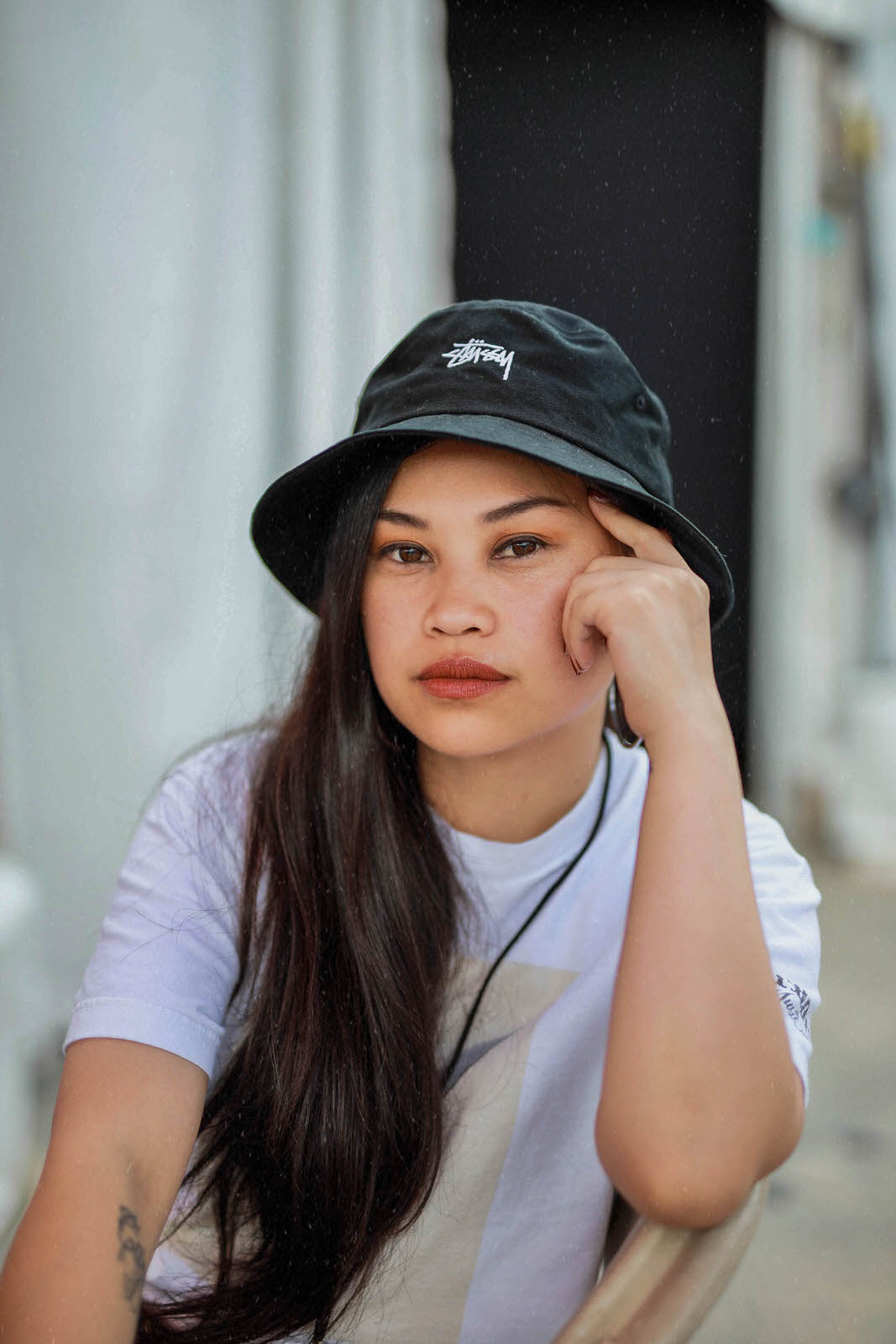
How has it been like to put music out there as an Asian-American woman, especially in a genre that is predominantly male and historically rooted in black culture?
Being an Asian-American woman in hip hop is still a bit of a rarity, especially in terms of mainstream music, but it’s not lost on me that there have been, and, currently are a lot of Asian-American women that are putting out quality hip hop records. I love hearing new voices and perspectives in hip hop, I think that’s what makes the art form so raw and honest—it’s poetry with stories.
What got you to start making politically charged music? What came first, the music or the activism? Was there a specific instance or moment that prompted this?
I feel like it came naturally for me to have my music be politically charged. Me being Filipina-American is already a political identity in itself, so my stories and perspectives would reflect my history and experiences.
Do you think art can change the world?
Art has the power and influence to change the world. I think art is the most accessible platform to share ideas and news—whether through film, music, or visual arts. Especially these days with social media, it makes it a lot easier for us to consume, interpret, and share art.
Your lyrics have so much nuance when it comes to discussing the experiences of the diaspora. How do you find community as a Filipino American?
I’m fortunate to live in such a diverse place like the Bay Area where it is easy to build community—there is a thriving community of artists here and people that I’ve found that share similar views and goals.
Given the complex history between the Philippines and America, how do you navigate that hyphenated identity?
I’ve been navigating the hyphenated Filipino-American identity since I was a young child. I think having a hyphenated identity always initially brings out the question of, “who am I?” This is a question I asked myself so many times growing up, because I never felt Filipino enough when I was in the Philippines, and never felt American enough here in the U.S. But as I got older, I realized that it’s not about measuring both sides of my identity, but understanding that both identities are essential to who I am.
There’s an ongoing discourse between Filipino-Americans and Filipinos in the Philippines on appropriation. What do you think of this conversation? For you, as an artist, when does influence become appropriation?
I think that this is an important topic to talk about, especially for me, as a Filipino-American artist participating and working in the genre of hip hop. I benefit from hip hop because it has afforded me a platform and an income to support myself and my family. I think it’s important for me to always reflect on my participation and to evaluate the spaces that I am taking up, and to make sure that I am educating myself and respecting the history and the culture.
I think influence becomes appropriation when it is hurting or disrespecting a community. I also realize that I am not in the position to define what appropriation is or is not; it is my sole job as a Filipino-American hip hop artist to make sure that I listen and respect both hip hop and the Black community.
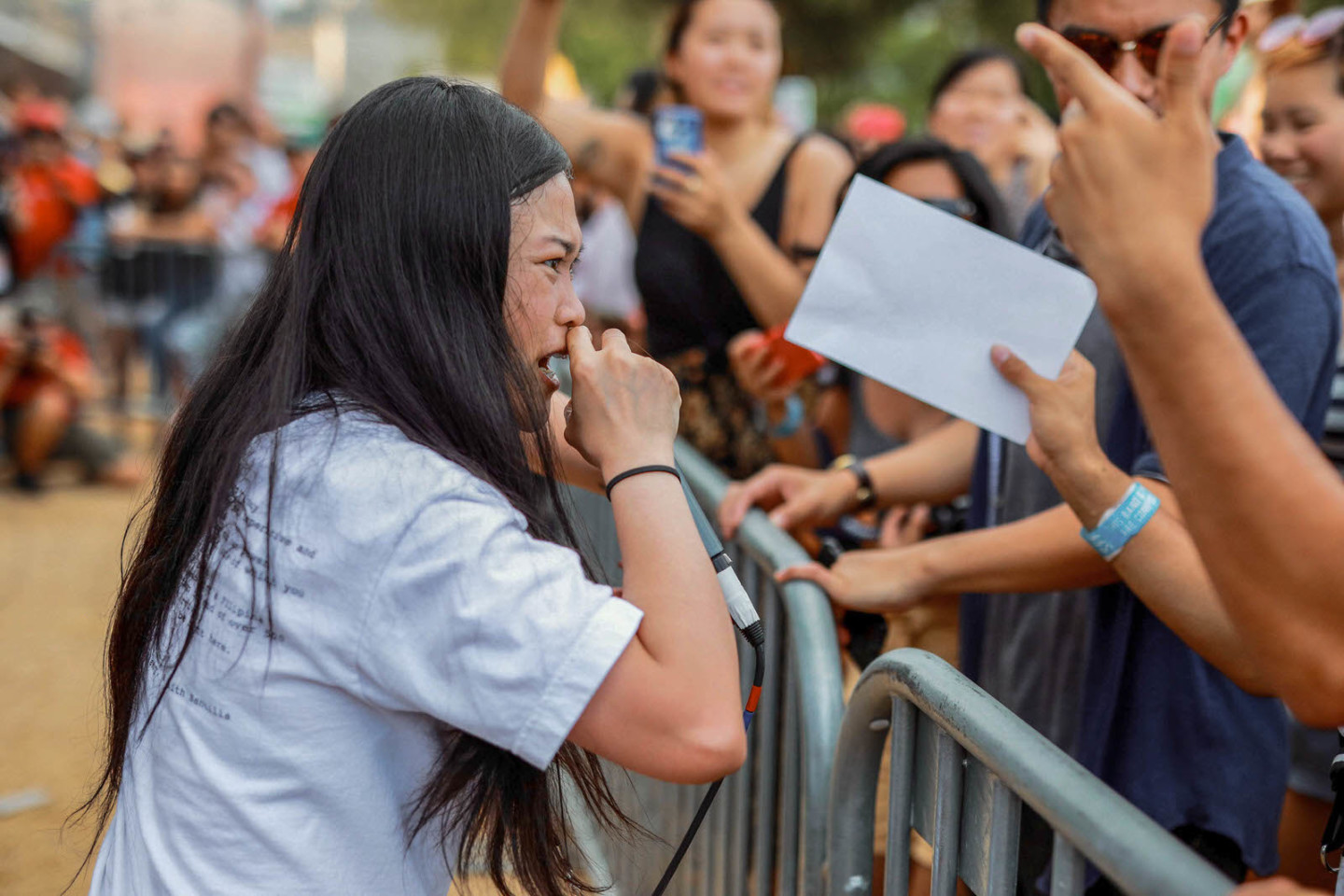
Since we’re talking about activism, we definitely have to talk about “Us” and its music video. How did that project materialize?
Us still remains as my favorite music video that I’ve done. I’m so proud of that particular project because it really was a labor of love, a community labor at that. Both the song and the music video couldn’t have been made without so many people’s contributions of time and talent. The project materialized while I was writing the CIRCA91 album in the Summer of 2017—back when I was still writing my verses for the song in the studio, I already knew that I wanted this record to be a single and I already had a vision for the music video, hence, a lot of the cultural references in my lyrics influenced the imagery that would later appear in the video.
In the song, Faith Santilla eloquently states, “Pinays have always been part, and parcel, if not, imperative and critical to the struggle.” What are your thoughts on that?
I love this particular line from Faith Santilla. I believe that it speaks to the fact that Pinays have historically been overlooked and silenced, though we too, are part of the history. So many Filipinas in history have changed the tide and influenced society, politics, and culture. The Philippines has always been a patriarchal society, and it’s time that we recognize that the women in our culture have been the pillars and leaders to so many movements.
How would you describe the struggle for a Filipina in the diaspora?
Being a Filipina in the diaspora is such a multi-layered and multi-faceted experience and identity. I don’t think one description fits all, as our journeys are all personal and unique, but something that we all share in the diaspora is the quest to uncover our voice, discover who we are, and to find a place to call home.
In addition to your music, I saw that you also founded a scholarship program. What’s the story behind Pinays Rising?
I started the Pinays Rising Scholarship program with my friend and mentor, Dr. Allyson Tintiangco-Cubales, who is a professor at San Francisco State University. We started this annual scholarship program because we wanted to give back to our respective communities, and we are both also very passionate about the arts, activism, and education.
We also wanted to encourage students who self-identify as Filipina, to pursue higher education. I think there is a lot of value in higher education, especially when we think about it as a tool and bridge for resources for our communities. We award students with $500 financial aid every year, and we hope to continue to expand the program. My dream is to make Pinays Rising a global scholarship program.
You’ve been breaking barriers in the field of hip hop. But I wanna highlight how you’ve been breaking barriers in STEM as well. How has it been like to be an Asian-American woman in STEM?
Careers in STEM are also very male-dominated, just like hip hop. However, for me, I’ve always looked at it as an opportunity to change the norm. One woman in a laboratory full of men is still a ripple in the ocean that will hopefully lead to more ripples down the line. I would love to see more women in general in STEM. It’s important that these spaces are inclusive because careers in STEM are more involved in directly impacting our communities, and are also helping to steer our changing society.

Could you tell us more about how you made your way into this field? How have things been like during the pandemic?
I studied Biochemistry and Molecular Biology in college, and decided that I was also interested in pursuing a career in the biotech field, seeing that there continues to be rapid advances in both the sciences and technology. I thought that it was exciting times for both and was curious to see where we can go next.
When the pandemic hit, it gave me an entirely new perspective on my job. I realized that yes, the sciences give us answers to questions about the past and present, but it further made me see that it is also important for us to move forward into the future. Things like medicine and vaccines allow us to overcome detrimental events like a global pandemic.
How do you balance your careers in STEM and the arts?
I think that balancing my careers in STEM and in the arts has always been grounded in time management, staying focused, and knowing how to prioritize my work. With that being said, it hasn’t been completely easy to balance both, but I hope that my careers show people, especially the young kids that follow my music, that it’s okay to have multiple interests, even if they’re completely different. Our multifaceted lives are what makes each of us unique.
What’s next for Ruby Ibarra?
What’s next for me is that I’ll be releasing my sophomore album very soon and I am also working on music for the upcoming FOX TV series called The Cleaning Lady, which is releasing in a few months.
How is the sophomore album coming along? What are you doing differently for this upcoming LP?
I am so excited for everyone to hear the sophomore album! I am continuing to work on it and will be working with collaborators in the upcoming weeks to work on features for some of the songs. I think this album is different from the previous one in that it is a lot more musical—it is more melodic and there are no samples in any of the music, everything was played using a live instrument, and this time, I am heavily involved in every single step of the process, including the music production. I am so proud of how the sophomore album is turning out and I promise that it will be worth the wait!
Who are the artists that you would like to collaborate with? Who are the artists that you would like to signal boost?
I would love to collaborate with Nadine again on another song and I would love to work with Kiana V for the first time! Artists that I admire that I think deserve a signal boost include Alex Bruce, Bawal Clan, and BLKD.
SUPPORT PURVEYR
If you like this story and would love to read more like it, we hope you can support us for as low as ₱50. This will help us continue what we do and feature more Filipinos who create. You can subscribe to the fund or send us a tip.

